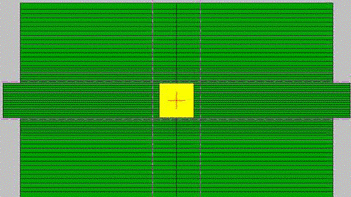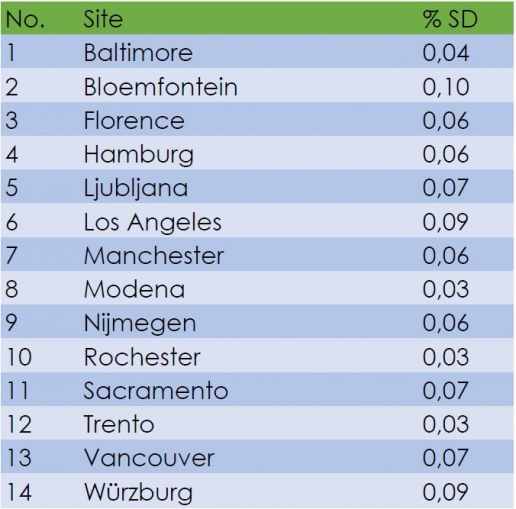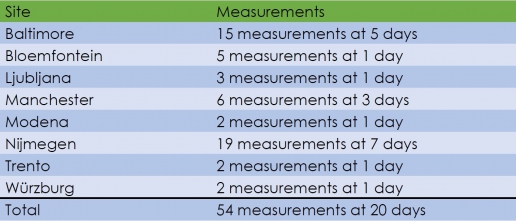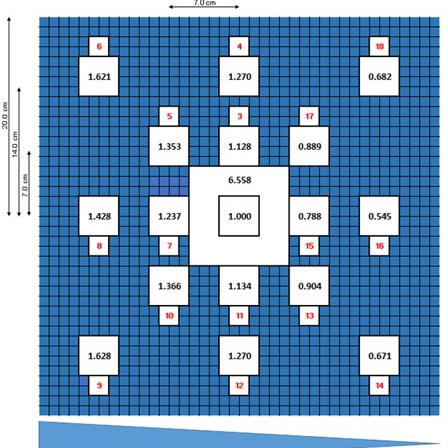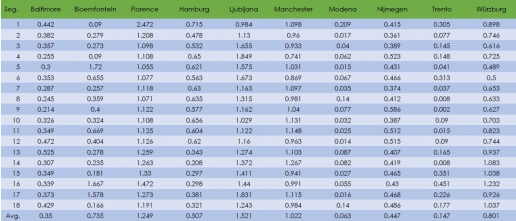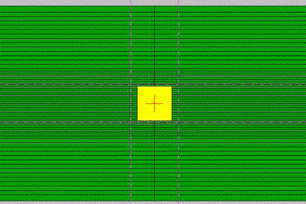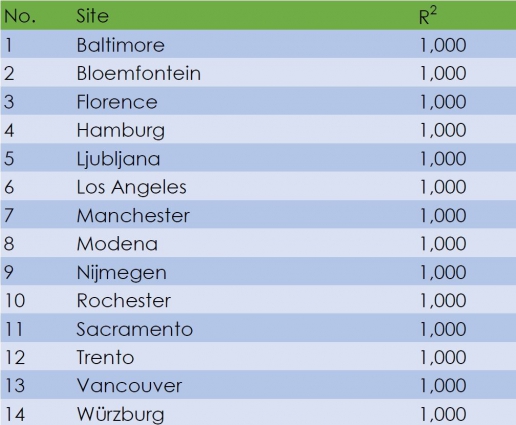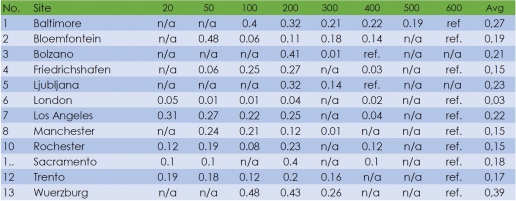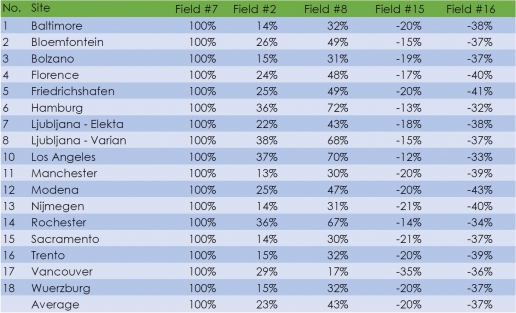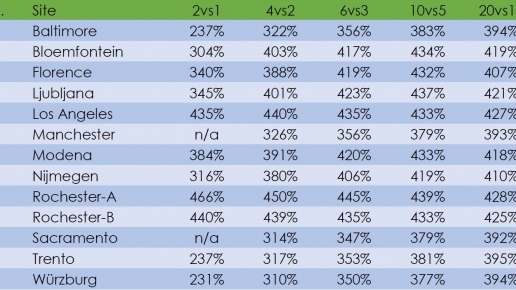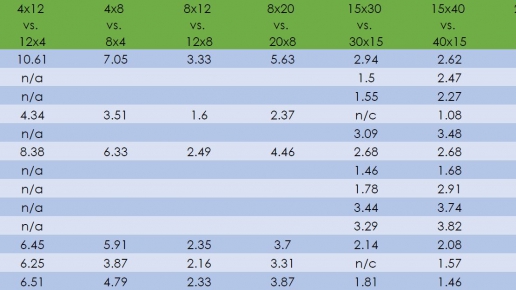Signal reproducibility test (short-term)
10 consecutive applications of a 6MV photon beam with the reference field size of 10cm x 10cm
The results of the short term reproducibility test show
a very high signal reproducibility of average 0,06%
when the linear accelerator operates under the same conditions
Signal reproducibility test (long-term)The long-term reproducibility test takes the linear accelerator variations into account when treating on different days.
Our clinical reference centers measured the QA Test Field multiple times on different days for a total of 54 measurements.
The QA Test Field was specifically designed to verify unique capabilities of the IQM System and is used during every system acceptance. It consists of 18 IMRT beam segments: one 10cm x 10cm beam segment at central axis and 17 4cm x 4cm beam segments equally distributed over the entire detector area.
These linear accelerator induced variations
increased the measured standard deviation
from average 0,06% short-term
to
0,684% long-term.
Signal linearity testDose Output Test
The signal linearity test verifies that the detector measures a signal that is directly proportional to the dose output.
All tests show that the IQM signal varies linear with the applied dose output.
Any change in the dose output proportionally changes the IQM signal.
Dose rate dependence test
The dose rate dependence test verifies that the IQM system measures the same signal for the same dose independent from the dose rate in which the dose is delivered.
A 10cm x 10cm x06 beam is delivered with a constant dose output of 100MU and the following dose rates
20MU/min / 50MU/min / 100MU/min
200MU/min / 400MU/min / 600MU/min
(for FFF beams the highest dose rate is also measured)
All measurements performed show a high independence of the IQM signal from the dose rate with an average variation of 0.2%
Beam location / position test
Tests how much the signal changes when an identical beam segment is delivered at a different position.
The QA test field consisting of 17 4cm x 4cm beam segments each delivering a dose output of 100MU with a 6MV photon beam and a constant dose rate of 600MU/min
The following segments are compared to Field 1
Field 7
(7cm in heel direction of the gradient)
Field 8
(14cm in heel direction of the gradient)
Field 15
(7cm in toe direction of the gradient)
Field 16
(14cm in toe direction of the gradient)
All signal changes measured during this test are significant.
Even the smallest relative variation of 13% over a movement of 7cm indicates variation of 1.75% per centimeter.
This is still a significant variation (>0.5%) for a movement of 3mm, which is more than double the resolution of the 2D array with the highest resolution currently available on the market.
Field size test
The field size test verifies the chambers sensitivity to different square field sizes.
The field size test uses a 6MV photon beam with a dose output of each 50MU applied at a constant dose rate.
The field size test compares the following field sizes with each other:
1cm x 1cm vs. 2cm x 2cm
2cm x 2cm vs. 4cm x 4cm
3cm x 3cm vs. 6cm x 6cm
5cm x 5cm vs. 10cm x 10cm
10cm x 10cm vs. 20cm x 20cm
The signal comparison for different field sizes show a significant signal variation when changing the field size.
Field shape test
The field shape test compares those rectangular fields with each other where the length of the first field matches the width of the second field and the width of the first field matches the length of the second field.
The field shape test uses a 6MV photon beam with a dose output of each 50MU applied at a constant dose rate.
The field shape test compares the following field sizes with each other:
4cm x 12cm vs. 12cm x 4cm
4cm x 8cm vs. 8cm x 4cm‘
8cm x 12cm vs. 12cm x 8cm
8cm x 20cm vs. 20cm x 8cm
10cm x 30cm vs. 30cm x 15cm
15cm x 40cm vs. 40cm x 15cm
25cm x 35cm vs. 35cm x 25cm
25cm x 40cm vs. 40cm x 25cm
IQM is capable of differentiating between fields that cover the same area,
but are different in length and width
